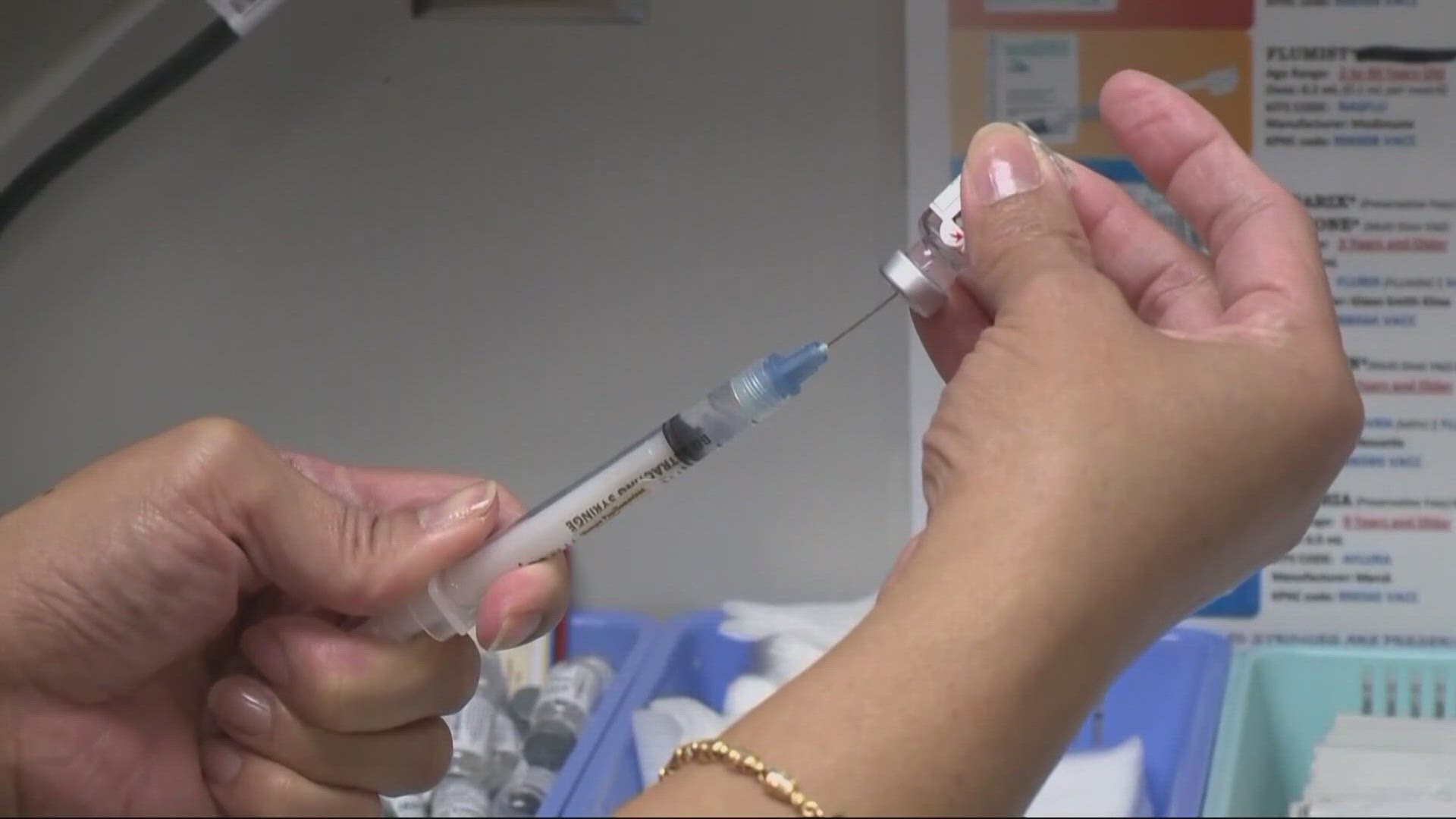PORTLAND, Ore. — When people think of the holidays, an image that normally comes to mind is family gathered together hugging, exchanging gifts and enjoying each other's company.
Such a wholesome scene could take a horrible turn this year because of the COVID-19 pandemic, specifically with record-high cases and deaths surging across Oregon.
As of Nov. 25, the coronavirus had killed 867 Oregonians, 765 of which were 60 or older. In other words, roughly 9 in 10 state residents who've died from the virus were older adults.
According to data from the Centers for Disease Control and Prevention (CDC), the risk factor for becoming severely ill with the coronavirus increases with age. People in their 50s are more at risk than people in their 40s, just as people in their 80s are more at risk than people in their 70s.
This observation is reflected locally by data from the Oregon Health Authority (OHA). In Oregon, more people 80 and older have died of the virus than people in their 60s and 70s combined:
- Ages 60-69: 153 deaths
- Ages 70-79: 174 deaths
- Ages 80+: 438 deaths
Why does it matter?
In the days leading up to Thanksgiving and other major holidays, Oregon's coronavirus activity has been consistently trending upward. There have been multiple record-high single-day counts for cases and deaths in the state, and coronavirus patients are increasingly ending up in the hospital.
Earlier this month, Gov. Kate Brown ordered a two-week, statewide "freeze" that aims to curb the spread of the coronavirus by restricting social gatherings and other activities.
More than 1,000 Oregonians have tested positive every day since the freeze went into effect, and dozens have died.
In a press briefing Thursday, Brown acknowledged the hardship the state's residents have faced not only with the pandemic but also with a historically devastating wildfire season.
"So many families have lost so much this year," Brown said. "Unfortunately, now more than ever is the time we must double down on our efforts to stop COVID from spreading."
Brown explained that with deaths on the rise and hospitals stretched thin, the pandemic situation in Oregon is "extremely dire." She pleaded with the public to make "smart choices" over the holiday weekend by refraining from gathering with non-household members, including many people's parents, grandparents and other loved ones.
"Irresponsible behavior over Thanksgiving, at best, will only make the pandemic last longer. At worst, it will send one of your loved ones to the ICU," Brown said.
These words are also worth keeping in mind for other upcoming holidays and social gatherings in general, or even before you consider giving your grandmother a hug after being apart for months on end.
The CDC has created a four-point list for social gatherings from lowest risk to highest risk during the pandemic:
- Lowest risk: Virtual-only activities, events, and gatherings.
- More risk: Smaller outdoor and in-person gatherings in which individuals from different households remain spaced at least 6 feet apart, wear masks, do not share objects, and come from the same local area (e.g., community, town, city, or county).
- Higher risk: Medium-sized in-person gatherings that are adapted to allow individuals to remain spaced at least 6 feet apart and with attendees coming from outside the local area.
- Highest risk: Large in-person gatherings where it is difficult for individuals to remain spaced at least 6 feet apart and attendees travel from outside the local area.



